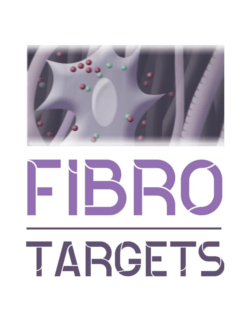
FIBRO-TARGETS (Targeting cardiac fibrosis for heart failure treatment) aims to shed light on the main mechanisms involved in myocardial interstitial fibrosis, which is characterized by the rigidity of heart tissue; it alters the contraction and relaxation functions of the heart, ultimately leading to heart failure. The project brings together 11 European partners in 6 countries, more than 35 professionals from research organisations, industry and public institutions.
Following a heart muscle disease, the heart undergoes a remodelling of which myocardial interstitial fibrosis is one of the key mechanisms. This fibrosis is characterized by a change in the structure of the heart tissue which becomes more rigid. It results from excessive accumulation of extracellular matrix proteins and changes in their properties. This matrix remodelling alters diastolic and systolic functions, eventually leading to heart failure, whose symptoms are shortness of breath, congestion, oedema and fatigue.
Heart failure is a serious disease because it is often irreversible and it is estimated that more than 6.5 million people are affected in Europe. It is the primary cause of hospitalization in subjects over 65 years of age. Its frequency is alarmingly increasing due to the ageing of the population and the explosion of cardiovascular risk factors (diabetes, obesity, high blood pressure). Early intervention on major mechanisms whose interstitial myocardial fibrosis could slow the progression of heart failure and its aggravation.
« Until now, the only way to quantify fibrosis has been biopsy, an invasive and imprecise method for estimating the degree of total fibrosis. For about ten years, cardiac imaging has allowed a good anatomical and functional evaluation of the myocardium. But these two methods remain unpredictive. This is therefore the challenge of the FIBRO-TARGETS project, which proposes an innovative approach enabling early detection of heart abnormalities using markers for myocardial interstitial fibrosis. « explains Professor Faiez Zannad, researcher at the Inserm U1116 unit, Centre d’Investigation Clinique P. Drouin Inserm 9501 in Nancy, coordinator of the FIBRO-TARGETS and HOMAGE projects.
Thanks to the extensive data collected by the FIBRO-TARGETS consortium, myocardial interstitial fibrosis has been identified as a major therapeutic target for the prevention and treatment of heart failure.
The FIBRO-TARGETS project therefore aims to identify precisely the main mechanisms involved in myocardial interstitial fibrosis and to design therapeutic approaches targeting some of these mechanisms. Cardiac fibroblasts (cells specific to the heart muscle) represent 60 to 70% of heart cells and are the main source of production of extracellular proteins responsible for fibrosis. These mechanisms being identified, it is therefore a question of intervening directly on the proliferation of fibroblasts and the synthesis of the extra-cellular matrix with molecules of therapeutic interest for the prevention, repair or slowing down of cardiac remodelling.
The objectives of FIBRO-TARGETS are firstly to confirm the main biological mechanisms involved in myocardial interstitial fibrosis. Then, it will be a question of experimentally validating new molecules and targeted therapeutic strategies aimed at improving the quality of the cellular matrix and limiting myocardial interstitial fibrosis. This will then allow potential clinical scenarios to be established to treat heart failure. Finally, the targets can be used as biomarkers to predict and qualify response to treatment for myocardial interstitial fibrosis.
To achieve these objectives, European researchers will attempt to elucidate the mechanisms of cardiac interstitial fibrosis in experimental physiology and pharmacology, molecular biology and pharmaceutical chemistry using in vitro and in vivo models existing and/or developed during the project. They will also validate the relevance of the new therapeutic approaches developed during the project. The second step, translational, will be to classify at-risk patients who are most likely to respond to targeted therapies according to personalized medicine. This classification into patient groups will be based on profiles determined using imaging and circulating markers associated with the proposed new targets.
The outcome of FIBRO-TARGETS will contribute to the resolution of a major public health problem of the 21st century particularly affecting the elderly.
